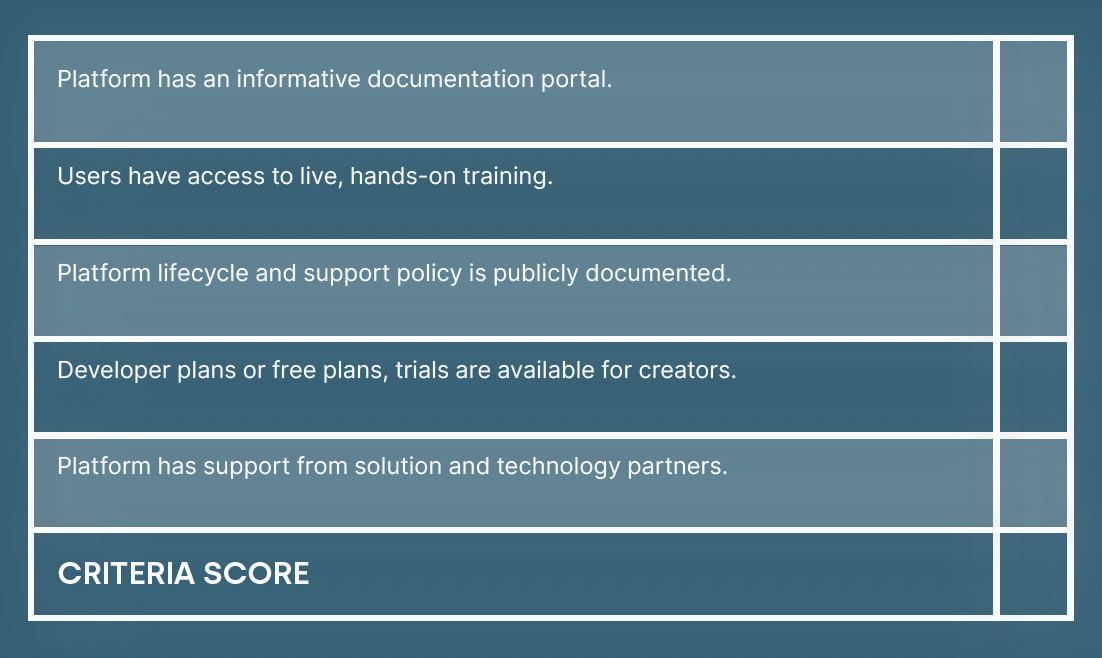Introduction
Application platforms are technologies that streamline, accelerate, or otherwise optimize the development of software. To put it simply: they are applications that help you build and maintain other applications. However, not all application platforms are created equal.
When it comes to enterprise software, organizations must consider capabilities around things like security, compliance, and ongoing application management throughout the software development lifecycle (SDLC). Many of today’s highest-profile application platforms fall in the “low-code/no-code” space (LCNC), which, to varying degrees, removes the need to work in code. This is a key paradigm shift as traditional code-based approaches can not sufficiently address the demands of the modern marketplace. It would require a huge investment in resources to hand-code a response to every new competitive offering, regulation, or technological upgrade. Still, even within the LCNC space, there are important differences to consider.
To start, we at Unqork disagree with the decision of various industry-watchers to bundle low-code and no-code technologies together into this single LCNC class. While low-code tools provide some level of abstraction, developers still must work within the context of a complex codebase. Not only do these tools necessitate experienced engineers to take on high-value tasks at every phase of the SDLC, but they don’t fully overcome the limitations of building with code.
At Unqork, we believe the future of software development is completely code-free, which is why we’ve invented the first enterprise no-code application platform. Our platform empowers some of the world’s biggest organizations to develop sophisticated applications via an entirely visual interface. This completely code-free approach can make a huge difference.
Taken together, Unqork’s platform allows organizations to build 3x faster, using 3x fewer resources, and at a far higher quality than traditional development approaches. We believe Unqork is the best application platform for most use cases, but in this eBook, we can put aside our inherent bias and provide some helpful guidance for choosing the enterprise application platform best suited for your organization’s needs.
What to Consider When Considering an Enterprise IT Platform
We won’t spell out what your list of vendors should look like, but a quick scan of existing application platforms should give you a good sense of your options. As you begin to shop for an enterprise application platform, you should consider how the platform rates up in three key areas: Build, Manage, and Run.
Below, we’ve outlined key capabilities within each of these areas and included a checklist of relevant features and functionality that can help you quantify and compare the value of various application platforms. In each checklist, place a “1” in each box where the application platform can boast this functionality and a “0” if it is lacking or missing. Add up the score at the bottom to quantify the value of the platform for this capability.
Build
UX Development
In order to address end-users’ rising expectations for digital experiences, it is important that developers are able to rapidly build and iterate rich web applications that provide 24/7 access to information and services. Note: While UX considerations are paramount in commercial B2C engagements, the bar has also been raised for B2B experiences as well as internal employee-facing solutions.

Process Orchestration
It is inherently faster to build automation and business logic visually than to write it out LoC by LoC; it is also less prone to coding error. Consider how important the automation of high-volume tasks is to your organization and how much value would be provided by smoothing out any development friction points.
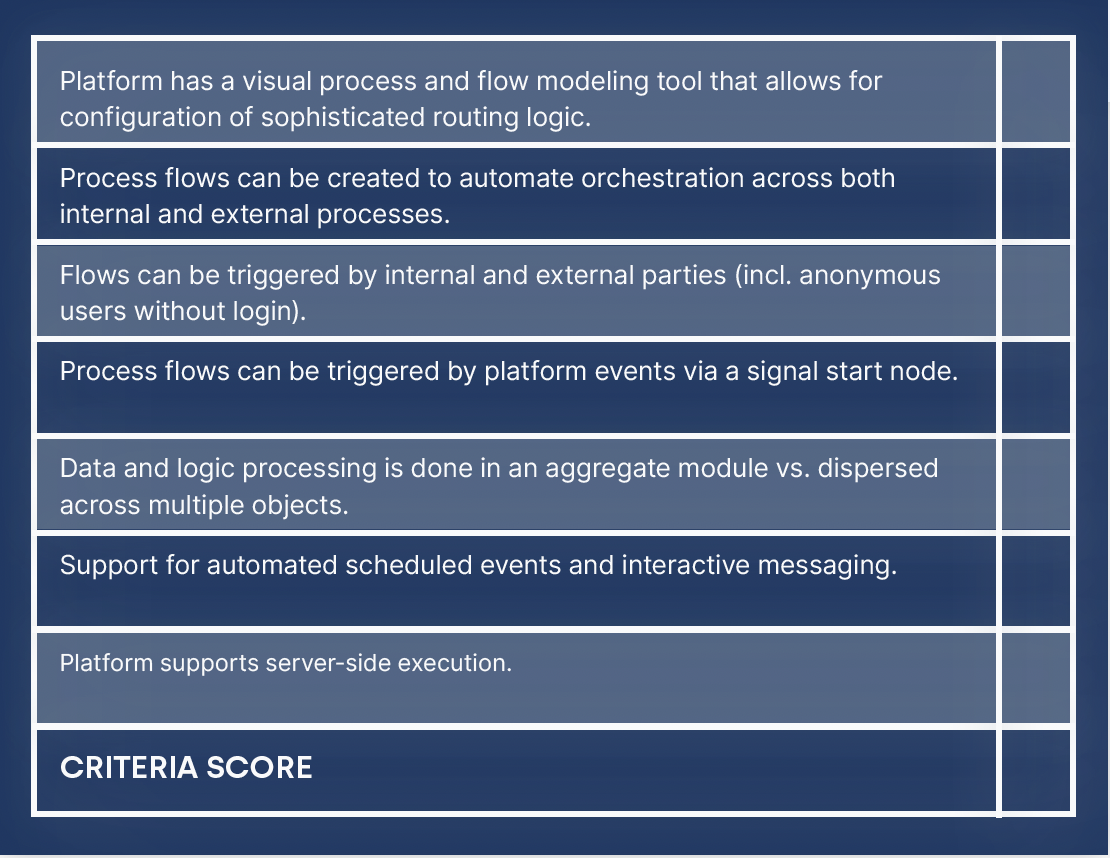
Data Processing & Management
Most organizations will lack the resources to rebuild their entire digital infrastructure, which may contain systems that are years—or even decades—old. Often, many of these older systems still work (or at least, well enough), so organizations will only need to shepherd data between legacy and newer systems. It is important to have an Extract, Transform, and Load (ETL) tool that can pull data from these legacy systems. In addition, users should be able to augment their data model easily.
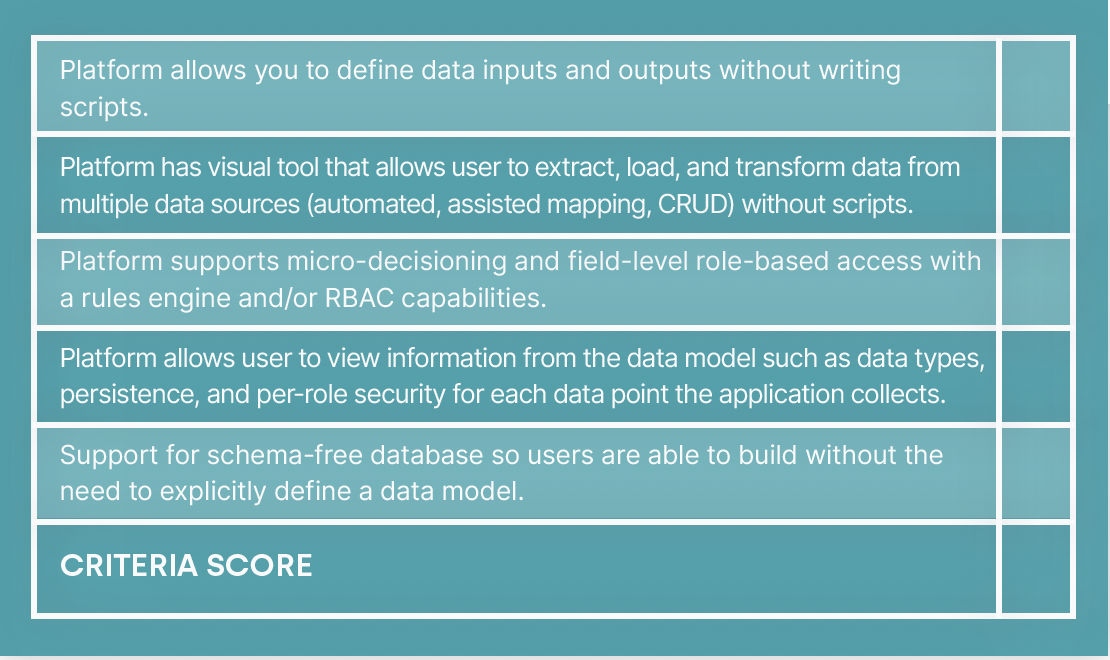
APIs, Microservices, & Integrations
No modern enterprise IT platform exists in a vacuum. It is important for users to be able to create APIs and reusable microservices with minimal scripting. In addition, users should be able to access pre-built integrations and connectors.
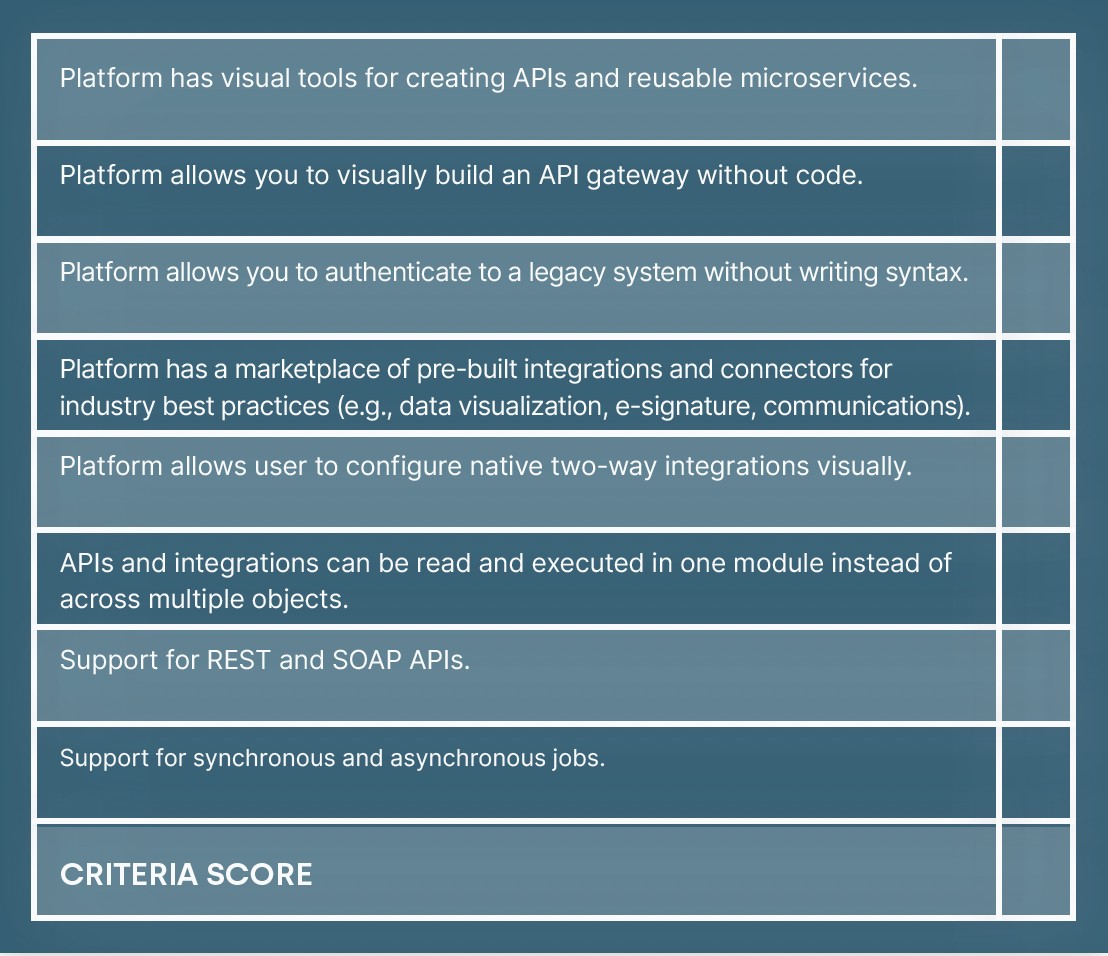
Manage
SDLC Management
To manage complex applications, organizations will need robust tools that support testing, review & release, monitoring, etc., all throughout the SDLC.
Reporting & Analysis
In order to keep stakeholders on top of application performance, an enterprise application platform should have the ability to create and display interactive reports into software performance as well as insights into how end-users are engaging with the system.
Identity & Access Management
Platform users should have the ability to manage all user roles and permissions for apps as well as at the field level.
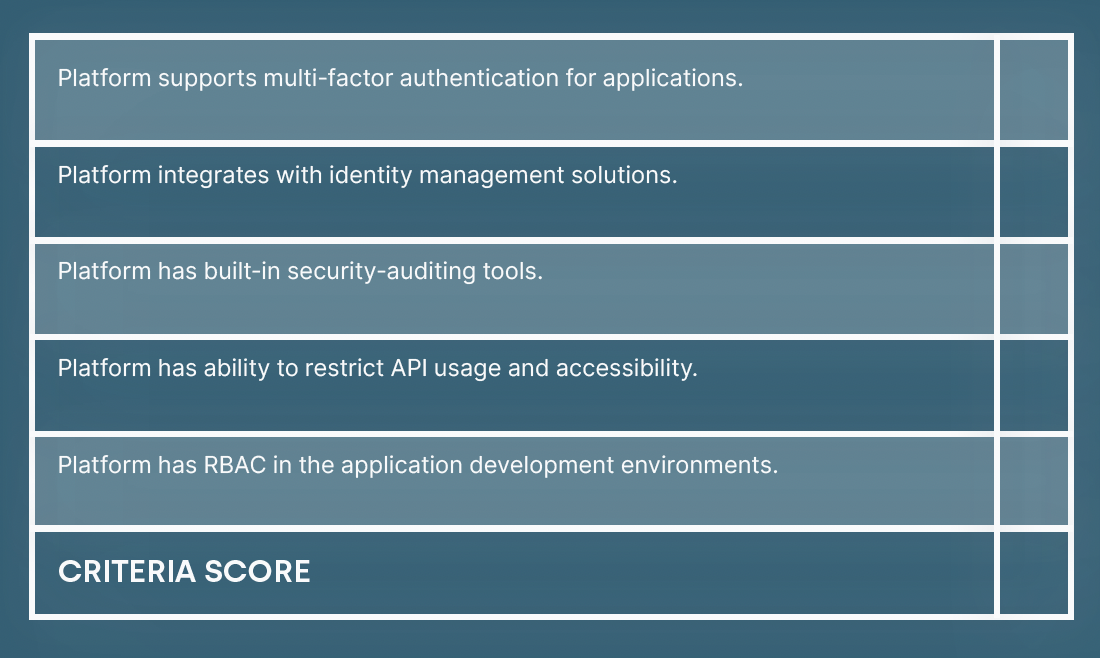
Run
Availability, Scalability, Latency, & Performance:
An enterprise platform must provide organizations with the ability to scale their services infinitely in a cloud-hosted infrastructure.
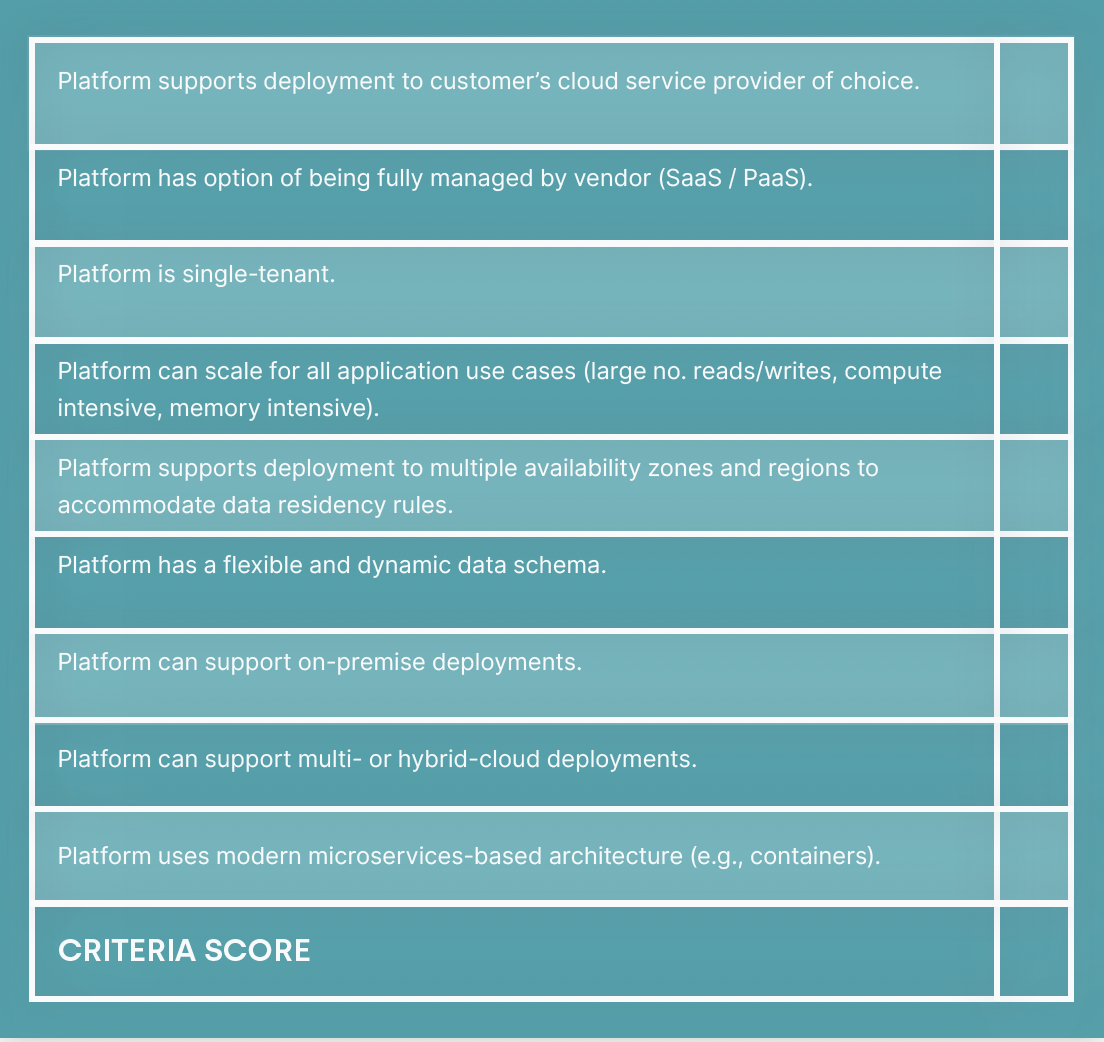
Security & Compliance
Enterprise-grade security and compliance functionality is table stakes—particularly in complex, highly-regulated industries such as finance, insurance, healthcare, and government.
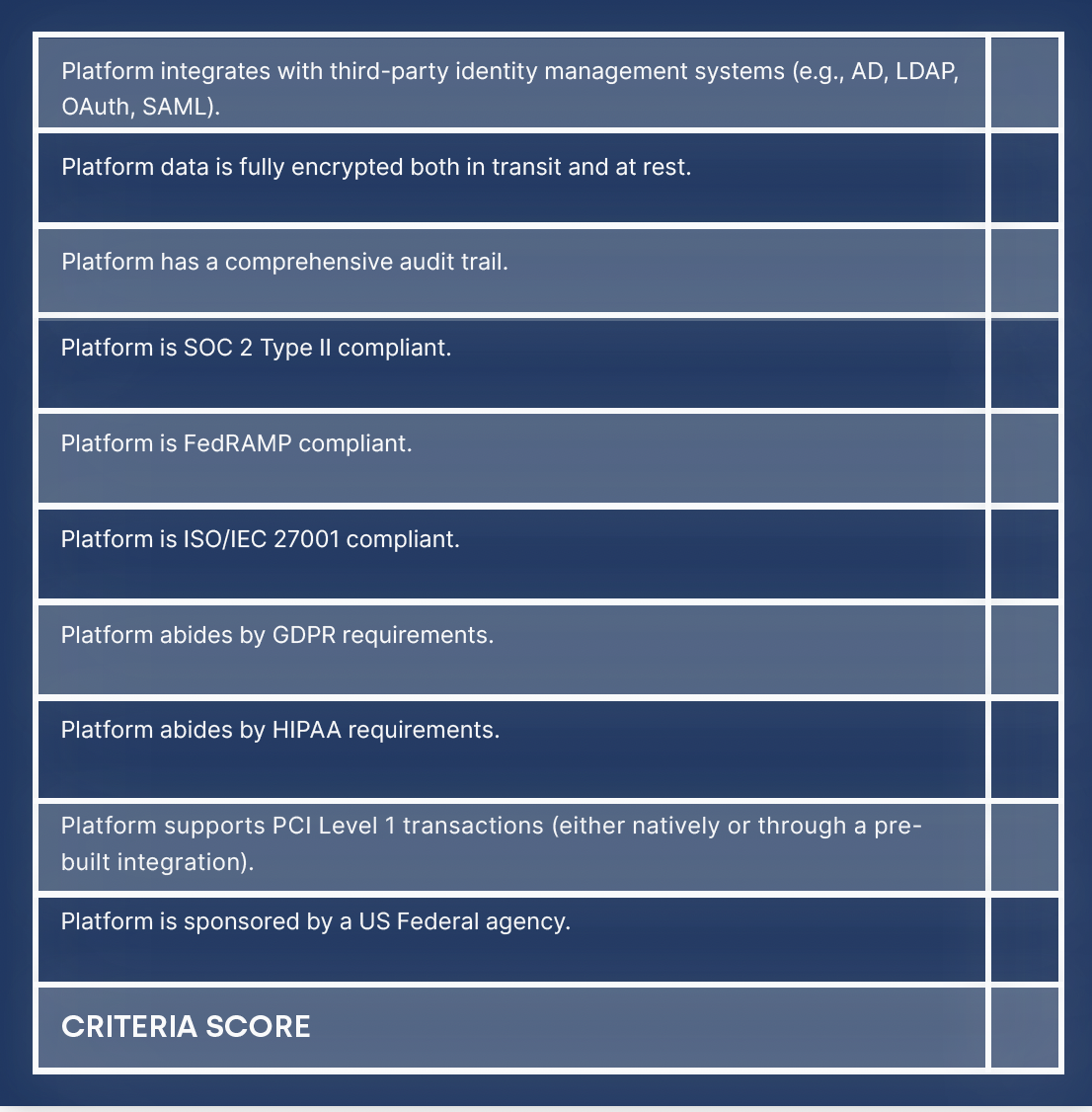
Documentation, Support, and Training
In an Enterprise Application platform, users should have access to robust documentation, lifecycle support, and training.
